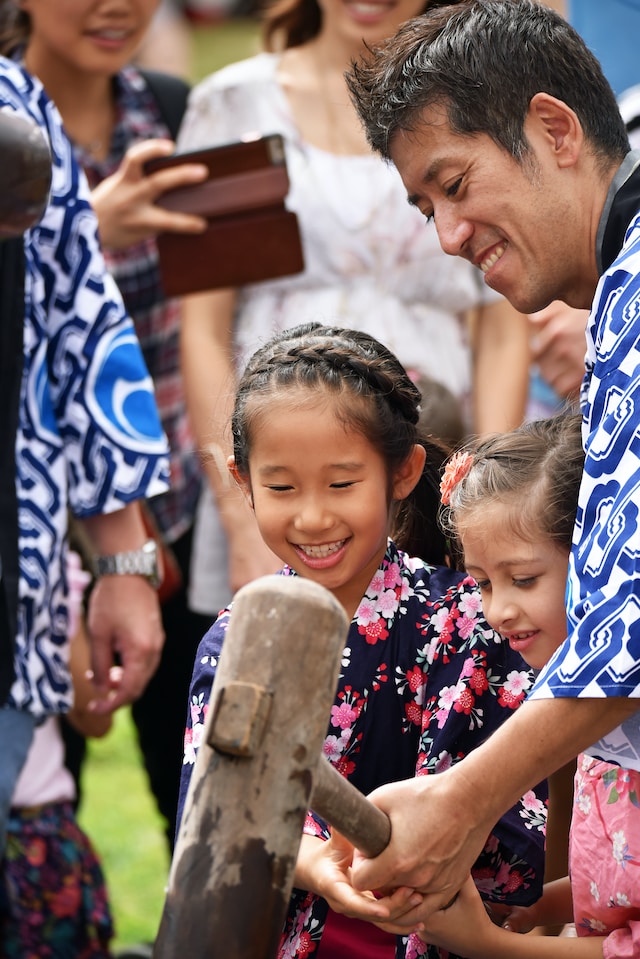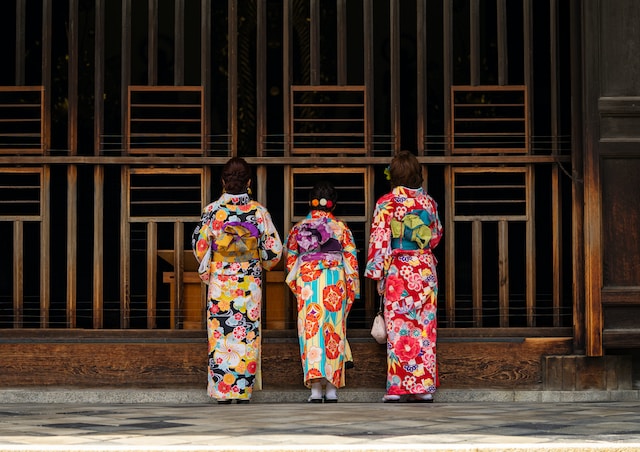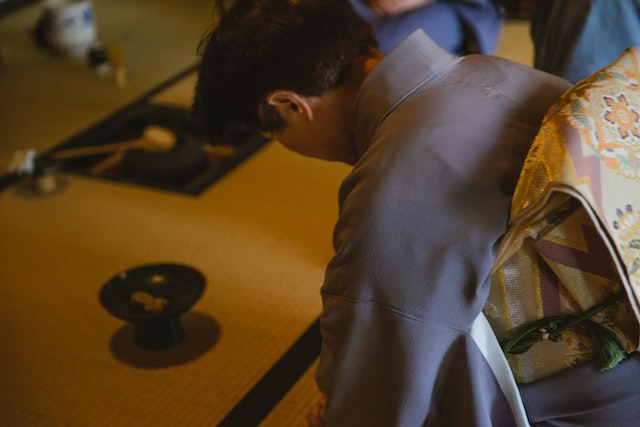
The Japanese language is beautiful.
Its unique characters and melodious sound create a mystique that is enchanting to anyone who hears it. The Japanese language is a graceful and elegant language that holds a special place in the hearts of its native speakers.
From its polite honorifics to its intricate writing system, the Japanese language is a testament to the sophistication of Japan’s culture and people. The language also reflects Japan’s deep connection to nature, with many words inspired by natural elements such as mountains, rivers, and flowers.
One cannot help but feel transported to Japan’s rich history and soulful traditions when hearing the language spoken. It is a language that can convey expressions of emotion in ways that English cannot, and its unique cultural context adds to the depth and beauty of the language.
Learning Japanese is a journey worth embarking on, as it allows one to explore a new way of thinking and relating to the world. It is a language that challenges the mind and expands one’s ability to communicate, connecting people across cultures in a profound way.
Writing Systems
The Japanese writing system is a fascinating aspect of the language, comprised of three distinct scripts: Hiragana, Katakana, and Kanji. Each system has its own purpose and characteristics, adding depth and complexity to the written language.
Hiragana
Hiragana is the first script that Japanese children learn. It consists of 46 characters, representing all the basic sounds of the language. Hiragana is characterized by rounded and curvy shapes, giving it a soft and gentle appearance. It is primarily used for native Japanese words, verb and adjective endings, and grammatical particles. Hiragana allows for phonetic representation, making it essential for reading and writing Japanese sentences and texts.
Katakana
Katakana is similar to Hiragana in terms of the number of characters (also 46) but differs in appearance. Katakana’s characters are more angular and straight, giving them a bold and sharp appearance. This script is used primarily for loanwords from foreign languages such as English, as well as onomatopoeic words, scientific terms, and emphasis in writing. Katakana lends a modern and dynamic touch to the Japanese language, reflecting the influence of other cultures.
Kanji
Kanji is the most visually striking and distinctive of the three scripts. It involves the use of Chinese characters, initially imported to Japan many centuries ago. Kanji characters represent a wide range of ideas, objects, and concepts, providing a depth of meaning impossible to achieve with the other scripts alone. There are thousands of Kanji characters in existence, but around 2,000 are commonly used. Kanji is used for nouns, verbs, adjectives, and names, enriching the Japanese language with layers of symbolism and cultural significance.

Techniques and resources for learning and practicing the writing systems:
Repetition and Mnemonics:
Learning the Hiragana, Katakana, and Kanji scripts requires repetition and practice. Flashcards or online quizzes can help memorize the characters. Additionally, creating mnemonic devices, like associating shapes with familiar objects or creating memorable stories, can aid in memorization.
Writing Practice:
Physical writing practice is crucial for mastering the stroke order and proper balance of each character. Utilize lined paper or practice sheets specifically designed for each script. Start by writing individual characters, gradually progressing to writing words and simple sentences.
Language Learning Apps and Websites:
Numerous online resources, mobile apps, and websites offer interactive lessons and exercises to learn and practice the Japanese writing systems. These platforms often provide audio and visual cues, quizzes, and progress tracking, making the learning process engaging and convenient.
Reading and Vocabulary Building:
Reading Japanese texts, whether simple children’s books or newspaper articles, is an excellent strategy for reinforcing the learning of the writing systems. It helps in recognizing characters, understanding their usage in context, and building vocabulary simultaneously.
Pronunciation and Phonetics
Japanese pronunciation is generally considered to be relatively simple compared to other languages. It consists of a combination of vowel and consonant sounds. The Japanese language has five vowel sounds: “a,” “i,” “u,” “e,” and “o.” These vowels are pronounced clearly and distinctly, without any variations in length or stress. Consonants in Japanese can either be single sounds or combined with a vowel to form syllables. It is essential to master the pronunciation of both individual sounds and the correct rhythm of syllables to speak Japanese fluently.
Phonetic system and accent patterns
The Japanese language uses a phonetic system known as pitch accent, where the emphasis on certain syllables determines the meaning of a word. Unlike many other languages, Japanese does not have stress patterns or intonation-based accents. Instead, the pitch accent refers to a rise or fall in pitch on specific syllables. Properly understanding and utilizing pitch accent is crucial for accurate communication in Japanese. While this may seem challenging at first, with practice and exposure to native speakers, learners can become skilled at recognizing and reproducing the correct accent patterns.
Improving pronunciation and listening skills
Like any language, practice is the key to improving pronunciation and listening skills in Japanese. Here are a few techniques to enhance your abilities:

Mimicking native speakers: Pay close attention to the pronunciation of native speakers and try to imitate their sounds, rhythm, and intonation. Practice repeating words and phrases until you can match their pronunciation accurately.
Listening to Japanese media: Expose yourself to a wide range of Japanese media, such as music, podcasts, movies, and TV shows. Listen actively and try to pick up on the sounds, cadence, and accent patterns used by the speakers.
Engaging in conversation with native speakers: Find opportunities to engage in conversations with Japanese speakers, either in person or through language exchange programs. Regular practice and interaction with native speakers will help refine your pronunciation and listening skills.
Using language learning apps and resources: Utilize language learning apps and online resources that offer pronunciation exercises and listening comprehension exercises. These tools provide audio samples, pronunciation guides, and interactive exercises to help hone your skills.
Remember, learning a language is a journey, and it takes time and perseverance to become proficient. With dedication and an open mind, you can achieve proficiency in Japanese pronunciation and develop excellent listening skills. Embrace the beauty of the language and immerse yourself in its melodic sounds. The rewards of mastering the pronunciation and listening skills in Japanese will open doors to a deeper understanding and appreciation for the language and its culture.
Vocabulary and Expressions
One of the fascinating aspects of learning the Japanese language is delving into its rich vocabulary and expressions. Japanese is filled with beautiful words and phrases that capture deep emotions, cultural nuances, and uniquely Japanese concepts.
One such concept is “wabi-sabi,” which represents a worldview centered around finding beauty in imperfection and impermanence. It is a reflection of Japan’s appreciation for the transient nature of life and the beauty that lies in simplicity. Another term, “gaman,” encapsulates the Japanese spirit of enduring hardships with patience and perseverance. It speaks to the country’s emphasis on stoicism and the belief that one should maintain composure in the face of adversity.
In addition to these philosophical expressions, Japanese abounds with words that reflect its close connection to nature. For example, “komorebi” describes the dappled sunlight that filters through the leaves of trees, creating a tranquil and serene atmosphere. Similarly, “tsundoku” refers to the act of buying books but letting them pile up without reading them, a nod to the love for knowledge and the appreciation for the physical presence of books.
When learning Japanese vocabulary, it is important to note the different levels of formality and the various honorifics used. Politeness plays a significant role in Japanese society, and the appropriate use of honorifics demonstrates respect and social awareness. Expressions such as “sumimasen” (excuse me) and “arigatou gozaimasu” (thank you) are commonly used as part of daily interactions.
As you delve deeper into the Japanese language, you will discover many other fascinating words and expressions that convey the essence of Japanese culture and the Japanese way of life. Each word has a story and carries with it a sense of history and tradition.
Politeness and Honorifics
In Japanese culture, politeness is highly valued and represents an important aspect of social interaction. Polite language, known as “keigo,” is used to show respect and maintain harmonious relationships. Honorifics are an integral part of keigo, and they are used to address others in a respectful manner.

Honorific Titles
“San”: One of the most common honorifics, “san” is used after a person’s name as a sign of respect. It can be used for any person, regardless of age or gender, and is similar to the English equivalent of “Mr.” or “Ms.”
Polite Language
“Desu” and “Masu”: When using polite language, verbs are conjugated differently to express respect. The copula “desu” is used to replace the plain form of the verb “to be,” while the verb ending “masu” is added to the stem of the verb to make it polite.
Politeness Levels
“Teineigo”: This is the basic polite form of Japanese and is used in most daily conversations. It is important to use this level when speaking with strangers, superiors, or in formal situations.
Humble Language
“Kenjougo”: Humble language is used to speak humbly about oneself or to show respect towards others. It is used when referring to one’s actions, accomplishments, or when talking about others who are of higher status or seniority.
Respectful Language
“Sonkeigo”: Respectful language is used to show respect towards someone of higher status or in formal situations. It is used to speak about someone else’s actions, accomplishments, or when referring to customers, clients, or honored guests.
Honorific Verbs
“O-” and “-ni naru”: Honorific verbs are used when showing respect to the subject or the person being talked about. “O-” is a prefix added to the verb to make it honorific, while “-ni naru” is added to show that an action has been done for someone else’s benefit.

Formal Expressions
“Itadakimasu” and “Gochisousama deshita”: These expressions are used before and after a meal as a form of gratitude towards the food and those who prepared it. “Itadakimasu” is said before the meal to acknowledge the food, while “Gochisousama deshita” is said after the meal to express gratitude.
Remember, using the appropriate honorifics and polite language shows respect and creates a positive impression in Japanese society. It is important to be mindful of the context and the relationship between you and the person you are speaking with.
The Japanese language is a truly captivating and beautiful language, with its unique characters, melodious sound, and intricate writing system. It reflects the rich history, cultural traditions, and deep connection to nature that Japan holds. Learning Japanese is not just about mastering the sounds and vocabulary, but also immersing oneself in the nuances of politeness and honorifics that are an integral part of the language. By embarking on this linguistic journey, one opens the door to a new way of thinking, communicating, and appreciating the profound beauty of the Japanese language and its culture.

